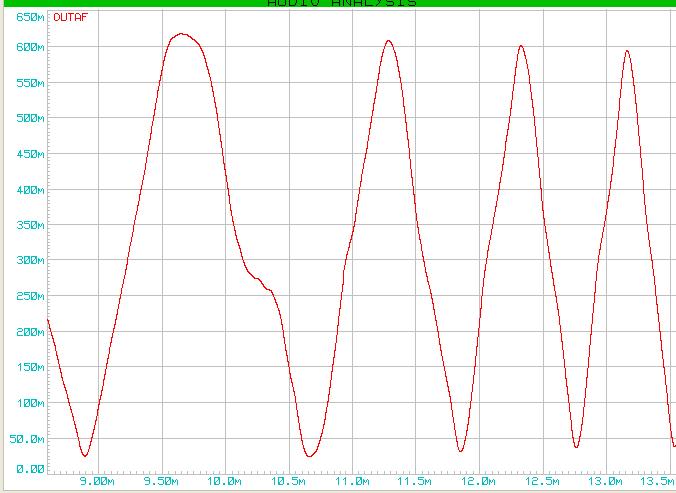This is about the idea / observation / hypothesis that theremin waveforms from responsive heterodyning instruments, are actually modified in real-time by the thereminists actions:
I have moved this from the theremini thread rather than continuing a hijack:
The most interesting thing to come out of the original ( theremini) thread for me, from an educational perspective, was the "operator oscillation" angle which Kevin brought up and Dewster named / identified. The whole latency issue suddenly took on an even higher priority for me with the realization that, unlike a portamentoed keyboard where you know the note will get to the intended key eventually, with a theremin this delay actually disrupts the essential 'control loop' formed between the player and the instrument.
But on a more esoteric level, it got me thinking about more 'subliminal' effects - and one of these is with regard to the real-time bending of a waveforms shape that a player can exert on a fast / heterodyning instrument.
Ok, simulation of anything truly realistic is difficult, as is capturing meaningful samples without having a great thereminist living next door (or probably more to the point, even if I had one next door, I would probably have by now become someone who caused them to be "out" whenever they saw me coming ;-) -
I decided to do the crudest simulation - two HF square waves into an XOR to produce a triangle wave, and subject the variable oscillator to some rapid pitch changes, and look at the waveforms. The following picture shows waveforms which are almost perfect triangles when the pitch is constant, but the kind of dynamic waveshape modulation possible with a players hand:

The lower the frequency, the more distortion is possible - the example above I think would be the most extreme 'modification' available from a really rapid movement or vibrato, and I dont verify the "reality" of the above.. (due to the length of time it takes for the simulation to run, I picked higher difference frequencies than are most effective - But down at 100Hz (10ms) the kind of distortion seen above is, I believe, quite possible.)
I do think it clearly shows that some degree of actual harmonic variation as a result of playing style DOES happen - Something that wont happen on a high latency instrument or single cycle updating wavetable playback instrument.
Fred.
It also strikes me that more rapid pitch change in the bass end is possible if the far field is not too compressed - so, in fact, it could be that linearity actually has an effect on the tone and not just the playability.
Could it be? ... The "classic" theremins possibly (?) had more oscillator coupling than modern instruments - this in itself gave higher harmonics in the bass difference frequencies- add to this a more compressed bass field and the increased player control of harmonics... ?


